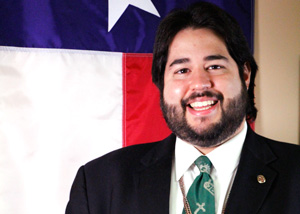
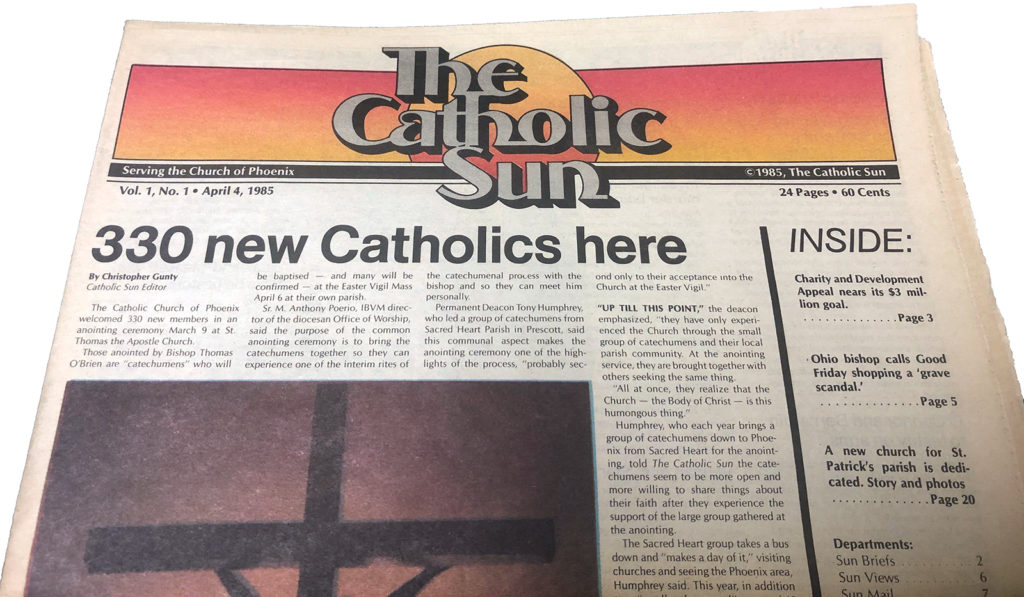
I’ve now served in the Catholic press for 12 years. I use the term “serve” because those of us in the field consider this to be a vocation. I was intimidated taking the helm of The Catholic Sun four years ago knowing the reputation of excellence the newspaper had. I knew that the Diocese of Phoenix had been through quite a bit before I arrived, and I was nervous about carrying on the legacy of my predecessors in providing the best news to our readers.
In reflecting on “Inter Mirifica,” the Decree on the Media of Social Communications promulgated by St. Paul VI in 1963, I recognized that the work of a Catholic journalist demands “that the news itself that is communicated should always be true and complete, within the bounds of justice and charity.”
The role of Catholic media in the history of the Diocese of Phoenix has done just that since its inception. The first official diocesan publication came in December 1971 with the debut of Alive magazine — just two years after the diocese was established, featuring a modern rendition of Our Lady of Guadalupe on the cover. In that first edition, editor Fr. John Doran was wanting to promote the upcoming diocesan consecration to Our Lady, officially making her our patroness. There was also a desire from Bishop Edward A. McCarthy to speak to the faithful.
“Frequently in the past, I have personally felt frustrated because there were things I felt that you, as a member of the faithful, should be told but I had no way of getting the word out,” Bishop McCarthy wrote in his inaugural column, “Devotedly Yours.” “Alive will now meet that need. It will be an important instrument in our living and growing together in the faith and life of Christ.”
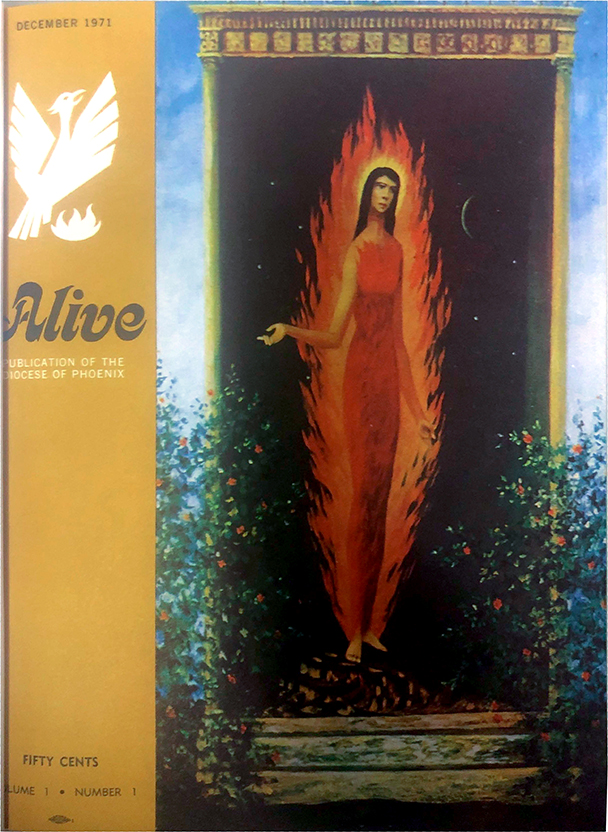
The magazine featured some diocesan news and a sampling of material from what was then the National Catholic News Service — which since then has dropped the word “National.” It also contained a series of essays and reflections, including a regular Spanish column titled “A Mi Buen Parecer,” and photos taken by Msgr. Alan Donohue.
The subscription-based magazine wasn’t having the reach diocesan officials were hoping for and, in 1985, was replaced by The Catholic Sun. My predecessor, Chris Gunty, was charged with launching the newspaper. Chris was 25 at the time and had come from the Chicago Catholic.
“I thought we needed a staff of eight people. Bishop thought we could get by with five, so we compromised and got five,” he told me.
The first issue was published on Holy Thursday, April 4, 1985. Today it reaches 115,000 homes each month, and thousands more each month through its website and social media.
“The first story we covered was how many people were coming into the Church in RCIA,” he said. “They wanted an issue out by Easter. I said ‘no problem’ — not realizing that Easter was early that year.”
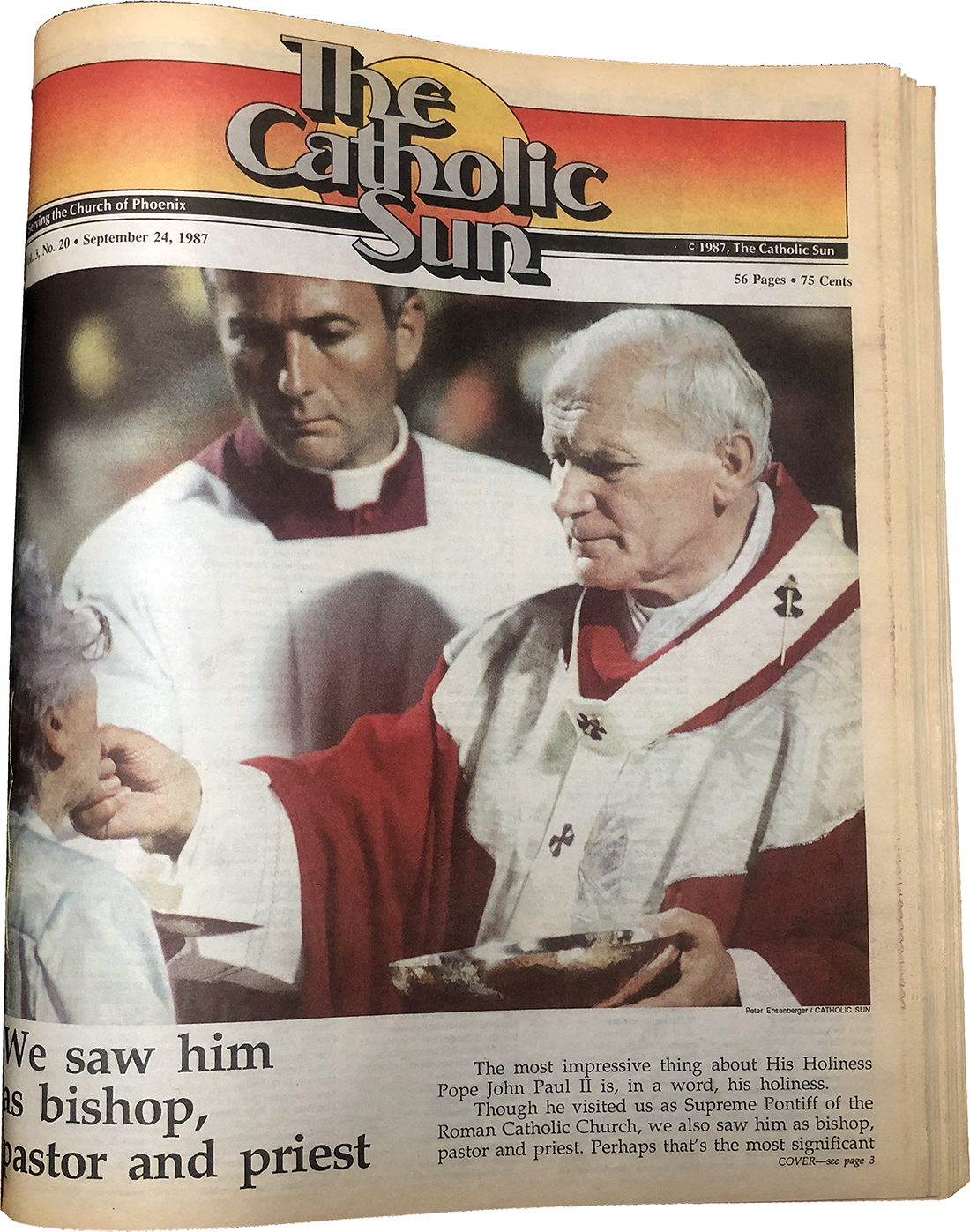
Part of the reason for the switch, Chris said, was that they were anticipating St. John Paul II’s visit two years later, an event which, once confirmed, required 18 months of planning. The day of the visit, Sept. 14, 1987, the Sun published a special four-page guide in conjunction with the state of Arizona.
One editorial decision he made in the coverage of that visit struck me. When deciding which photo to use on the front page after the visit, a photographer suggested he use one shot by colleague Peter Ensenberger of the Holy Father distributing holy Communion. While the visit of the pope was important, ultimately everything revolved around the Eucharist, the source and summit of the Christian life.
“OK,” the young editor told the photographer. “You convinced me.”
I asked him if he knew he’d met a saint when John Paul visited. He didn’t know that about John Paul, but he did know that about Mother Teresa when she visited in 1989.
“When they first moved into the homes, she said ‘this won’t do. We can’t have anything more than the poorest people we serve will have,’” he told me.
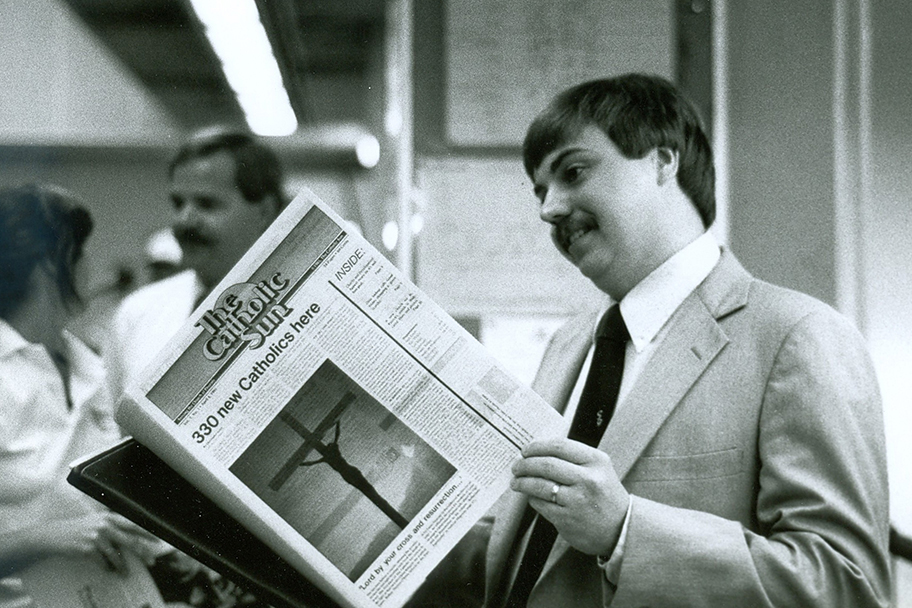
Of course, covering Catholic news isn’t always pleasant. Chris wrote his first story covering the sex abuse crisis in 1986 for the Sun. Quoting Sr. Mary Ann Walsh, herself a longtime Catholic journalist, he said, “This is our story, and good or bad, we have to tell it first.”
But, that’s what makes ours a vocation. “The Church is all about the Truth (Christ). We have an obligation to tell the truth while also communicating the Truth.”
As media has evolved, so has the diocese’s use of it. That includes websites, social media, Catholic radio, podcasts and the TV Mass.
“There is hardly a news item or matter of discussion … that is not brought within the family circle by means of the printed page, or an audiovisual means, so that it can influence the conduct of one and all, awakening the most diverse reactions,” St. Paul VI wrote in his World Communications Day message the same year he established the Diocese of Phoenix.
Our vocation, our mission, is to take part in evangelization. I’ve strived to take this responsibility throughout my career, and with a strong staff in both the newspaper and communications offices, we are living up to this call, by the grace of God.



